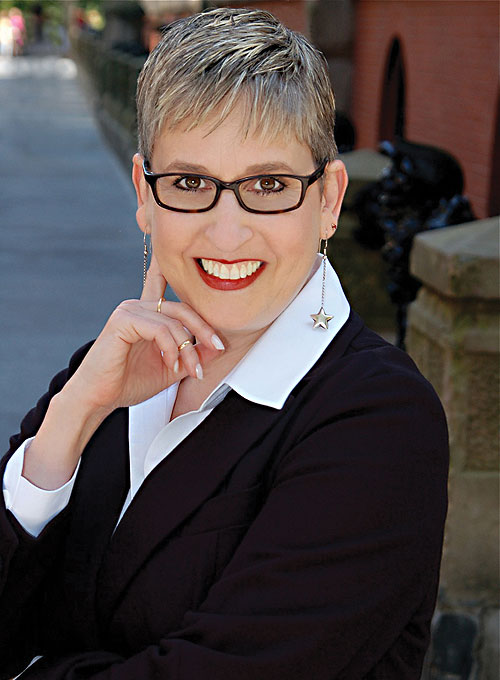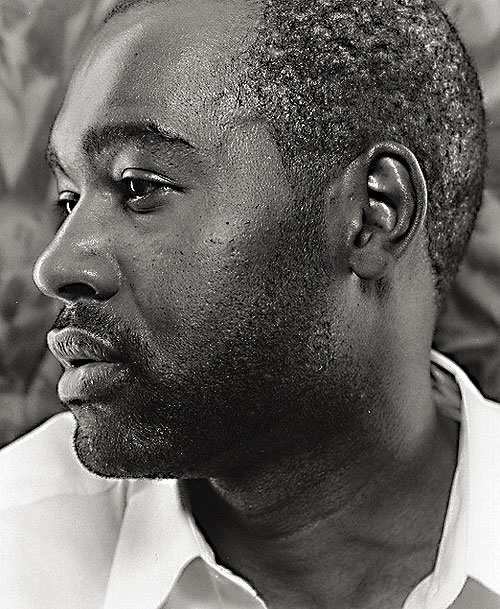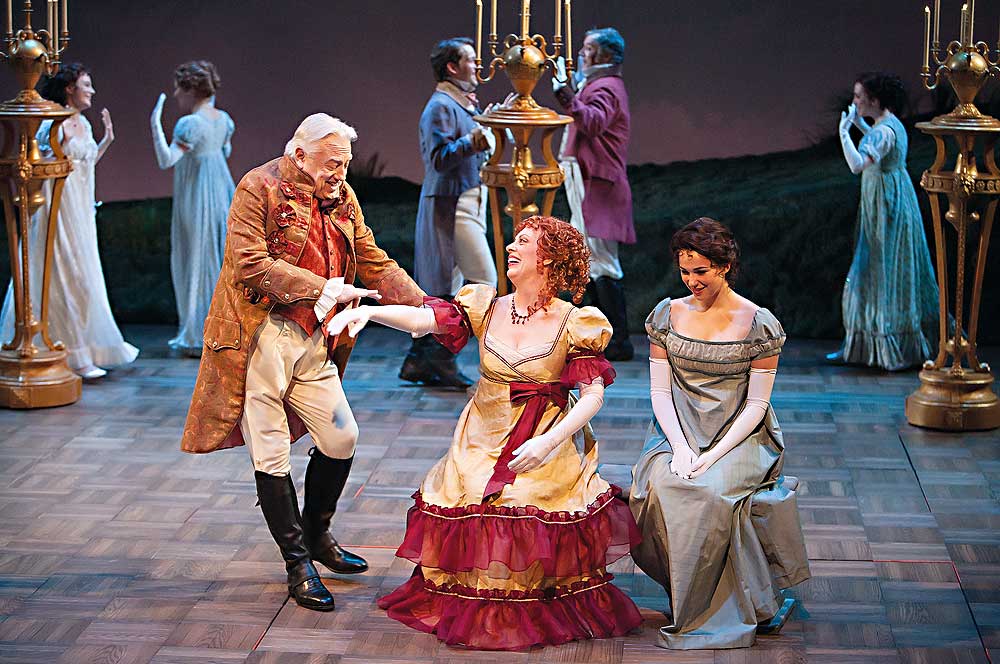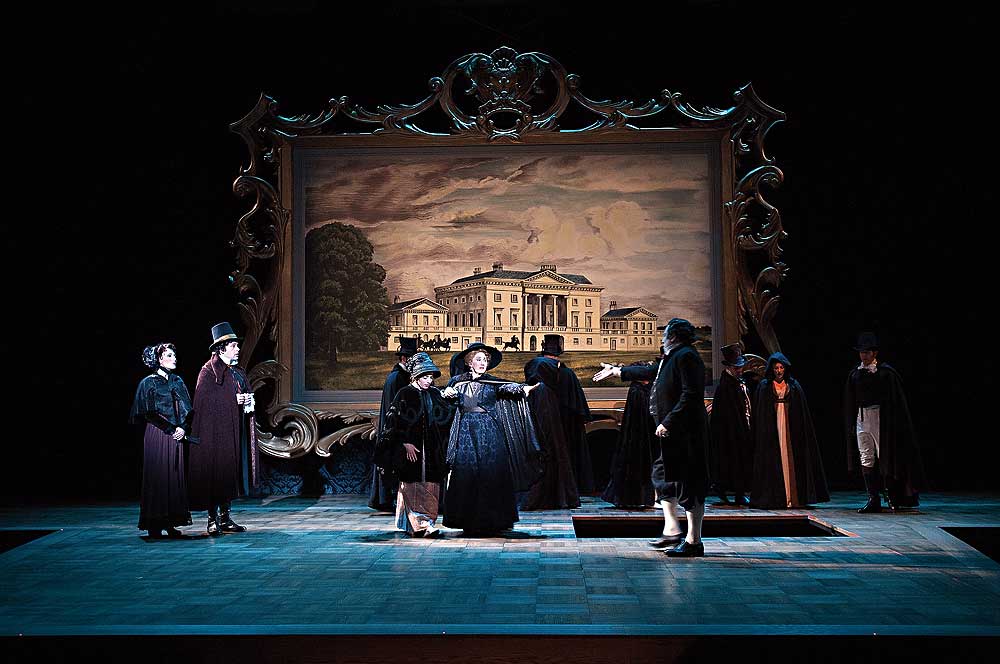Each month, American Theatre goes behind the scenes of the design process of one particular production, getting into the heads of the creative team. This month’s production is Sense and Sensibility at Denver Center Theatre Company.

Marcia Milgrom Dodge, DIRECTION, CHOREOGRAPHY: I’m not a Jane Austenite. I had read some Austen, and knowing the denseness of this book, I was impressed with how Jeff Haddow and Neal Hampton really distilled the story down to the essentials. The relationship between the sisters, Marianne and Elinor, was particularly exciting to me; I’m one of four sisters. One of the big questions that scenic designer Allen Moyer and I had to tackle was evoking the different locations—I was of the mind that I could tell the story with only the essential props and scenery. Allen said, “We could represent the Norland Estate [above] with a painting. And from that, whatever scene we required, we could just do it with furniture.”
In moving from Norland to the countryside, I wanted a hillside that functioned in two different ways: as the opposite of the austere Norland, and as a place where romance could blossom. The modesty of the cottage the girls were living in was suggested with a window seat. We wanted to be able to focus on the characters while establishing location and class with spare design gestures. Because theatre is such a collaborative experience, I like my audience to fill in the blanks.

Allen Moyer, SCENIC DESIGN: When a piece has as many locations as Sense & Sensibility did, and when it is being produced on a thrust stage, your first overriding idea has more to do with how you keep the show moving quickly and how scenery and furniture come on, and how it leaves, the stage. Once we figured out how we were going to make that happen, we easily decided that at its core, the story was about achieving a perfect blend of the wild and the cultivated. Mr. Dashwood, Elinor and Marianne’s father, believed in this basic concept when planning his garden in Norland Park. That idea became our design mantra. The struggles our heroines experienced were all about finding this balance in their lives and temperaments.
The first house, Norland, was represented with a painting in a big, 18th-century-style Chippendale gold frame. The painting is based on a print of the house on which Austen based Norland. We go from that world to the natural world of the English countryside that has no boundaries—it’s nothing but sky and beautiful green hillsides. True nature is not frame-able—you can’t contain it. And when the story goes to London, we go back to the frame, because in that world, you again must behave within the limits of high society. In the end, we go back to Barton Park and finish the evening with the frame coming in, but it exists within the space as opposed to framing it. Life is about a healthy combination of the wild and the tame.

ESosa, COSTUME DESIGN: We used color to differentiate between the country and the city, and between the characters. The city ladies are more sophisticated, with more money, and dressed in rich, jewel tones. Then we had the country folk [above] with a lighter, pastoral palette that we derived from the paintings of the period. There were color differences between the two sisters as well. Elinor [above, right] was in blues and greens, because she’s more serious—beautiful and young, but grounded. Marianne is the light-spirited one in the family; she believes in true love, so she’s in pink and corals—pretty, romantic colors.
The young girls were dressed fashionably, while the mother and the older ladies wore more stately colors, things that would have been five years behind. Back then, the vest was the man’s peacock moment, so I put a lot of energy into the vests, so they could convey the period, time, who the character was. Not everyone wears the current fashion of the day, because of where you are and what station you are in life. It’s a delicate thing you sometimes lose in theatre. Some people are ahead of the curve, some are slightly behind, and that makes them real.

Sense & Sensibility the Musical ran April 5–May 26 at Denver Center Theatre Company, under the direction of Marcia Milgrom Dodge. Based on the novel by Jane Austen, the show featured book and lyrics by Jeffrey Haddow, music by Neal Hampton, scenic design by Allen Moyer, costume design by ESosa, choreography by Dodge, lighting design by James F. Ingalls, sound design by Craig Breitenbach, orchestrations by Kim Scharnberg and Hampton, vocal arrangements by Hampton, dramaturgy by Douglas Langworthy, voice and dialect coaching by Kathryn G. Maes, musical direction by Paul Masse, music supervision by David Loud, stage management by Christopher C. Ewing, casting by Stephen Kopel, production direction by Edward Lapine and association direction/choreography by Josh Walden.


